What's New
Displaying results 3271 - 3280 of 4914

Resource | Reviews and Snapshots,
The AIDS response has achieved astonishing successes in the leveraging of finances. In just over a decade, global financing for AIDS increased from millions to billions, reaching highest levels ever in 2012 at US$ 19 billion. Asia and the Pacific has mirrored this global trend, with estimated regional HIV spending rising from US$ 700 million in 2005 to US$ 2.2 billion in 2012.
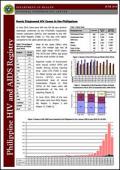
Resource | Fact Sheets,
In June 2014, there were 494 new HIV Ab sero-positive individuals confirmed by the STD/AIDS Cooperative Central Laboratory (SACCL) and reported to the HIV and AIDS Registry. This was 15% higher compared to the same period last year (n=431).
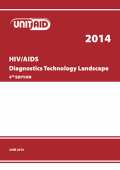
Resource | Publications,
The HIV/AIDS Diagnostics Technology Landscape is published annually and is prepared as part of a broad and ongoing effort to understand the technology landscape for HIV/AIDS. This document is a semi-annual update on the technologies for CD4, viral load, and early infant diagnosis (EID) testing, as well as for the diagnostic pipeline.
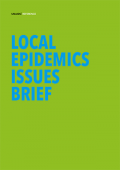
Resource | Publications,
This brief discusses important new opportunities to reverse the HIV epidemic in specific locations and among key populations at higher risk of HIV exposure. More and more countries are collecting and analysing data that enable these locations to be identified and addressed. Data collection is expanding, and new methods are being used to identify where localized epidemics may be emerging, where specific populations are the most affected by HIV and where vital HIV services are deficient or absent. These data are being combined in innovative ways, including with geographical information, to produce a more detailed and vivid understanding of the HIV epidemic, down to the district and subdistrict levels. This makes it possible to focus HIV programmes more precisely and effectively and to offer or adapt services to reach greater numbers of people in need.
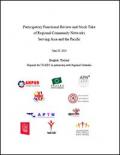
Resource | Reviews and Snapshots,
The Participatory Functional Review and Stock Take of Regional Networks Serving the Asia and the Pacific Region aims to understand the strategic contribution of 10 regional networks (selected by UNAIDS) over the past five years, further develop their institutional arrangements and capacities to deliver on their mandates, and strengthen their relevance and effectiveness especially their value-added to national stakeholders, donors, and the general public. As such the review provides the regional networks with an opportunity to take stock and determine how to better position themselves over the next 3 to 5 years in response to the changing landscape of HIV in the region and globally.

Resource | Publications,
The Bangladesh Multiple Indicator Cluster Survey (MICS) Progotir Pathey was carried out in 2012-2013 by Bangladesh Bureau of Statistics in collaboration with The United Nations Children's Fund (UNICEF), as part of the global MICS programme. Technical and financial support was provided by the United Nations Children’s Fund (UNICEF).
The global MICS programme was developed by UNICEF in the 1990s as an international household survey programme to collect internationally comparable data on a wide range of indicators on the situation of children and women. MICS surveys measure key indicators that allow countries to generate data for use in policies and programmes, and to monitor progress towards the Millennium Development Goals (MDGs) and other internationally agreed upon commitments.
The objective of this report is to facilitate the timely dissemination and use of results from the Progotir Pathey MICS prior to the release of full tables and the final report that will contain detailed information on all survey findings by various demographic, social, economic and cultural characteristics.
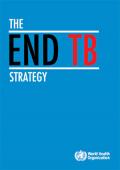
Resource | Publications,
The vision for the post-2015 global tuberculosis strategy is "a world free of tuberculosis", also expressed as "zero deaths, disease and suffering due to tuberculosis". The goal is to end the global tuberculosis epidemic.
The Millennium Development Goal target "to halt and begin to reverse the incidence of tuberculosis by 2015" has already been achieved. The related Stop TB Partnership targets of reducing tuberculosis prevalence and death rates by 50% relative to 1990 are on track to be achieved by 2015. Under this strategy, new, ambitious yet feasible global targets are proposed for 2035. These include achieving a 95% decline in deaths due to tuberculosis compared with 2015, and reaching an equivalent 90% reduction in tuberculosis incidence rate from a projected 110 cases/100 000 in 2015 to 10 cases/100 000 or less by 2035. These targets are equivalent to the current levels in some lowincidence countries of North America, western Europe and the Western Pacific. An additional target proposed to ascertain progress of universal health coverage and social protection is that by 2020, no tuberculosis-affected person or family should face catastrophic costs due to tuberculosis care.

Resource | Fact Sheets,
In May 2014, there were 495 new HIV Ab sero-positive individuals confirmed by the STD/AIDS Cooperative Central Laboratory (SACCL) and reported to the HIV and AIDS Registry (Table 1). This was 19% higher compared to the same period last year (n=415).
Most of the cases (96%) were male. The median age was 28 years (age range: 17-69 years). The 20-29 year (57%) age group had the most number of cases.
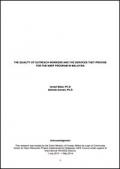
Resource | Publications,
Outreach workers have been the focal point for the success and failure of the Needle Syringe Exchange Program (NSEP program) in Malaysia. They are the back bone and considered the front line workers for the NSEP program in Malaysia. They are instrumental in providing all of the services that have been stipulated under the NSEP program and the rightly so individuals to deal with people who inject drugs (PWID) in the community. Outreach workers often face many daily challenges when they work with PWID. Additionally, they also have to face stakeholders who completely reject or give very little support to the NSEP in Malaysia.
The general aim of this study is to examine factors that can influence the quality of services provided by the outreach workers to the PWID through the NSEP program.

Resource | Publications,
A five-day consultation meeting on STI and HIV with the national stakeholders in Nauru was conducted by the Ministry of Health of Nauru, together with the World Health Organization (WHO) Office of the Representative in the South Pacific and the Division of the Pacific Technical Support and the Secretariat of the Pacific Community from 26-30 May 2014.
Over-all, the five-day consultations achieved two main outputs: (1) the new implementation plan developed for Nauru that is aligned with Nauru’s National Health Plan, the Nauru’s Sustainable Development Strategy, the Australia and Nauru’s Partnership Priority Agreement; and (2) the documented country dialogue process that will feed into the development of the concept note of the Multi-country Western Pacific for the Global Fund’s New Funding Model covering 2015 to 2017.





